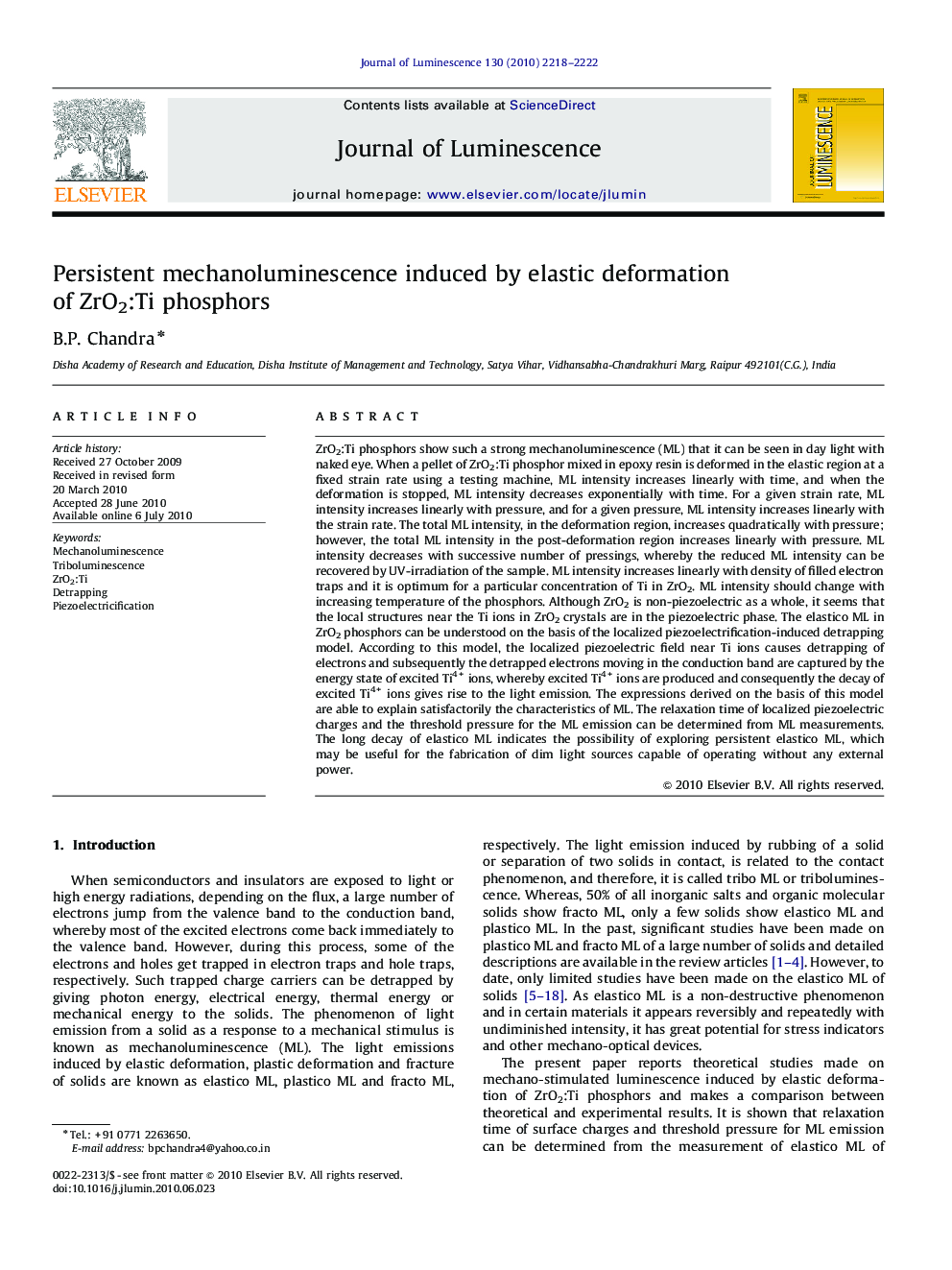| کد مقاله | کد نشریه | سال انتشار | مقاله انگلیسی | نسخه تمام متن |
|---|---|---|---|---|
| 5402334 | 1392731 | 2010 | 5 صفحه PDF | دانلود رایگان |
عنوان انگلیسی مقاله ISI
Persistent mechanoluminescence induced by elastic deformation of ZrO2:Ti phosphors
دانلود مقاله + سفارش ترجمه
دانلود مقاله ISI انگلیسی
رایگان برای ایرانیان
موضوعات مرتبط
مهندسی و علوم پایه
شیمی
شیمی تئوریک و عملی
پیش نمایش صفحه اول مقاله

چکیده انگلیسی
ZrO2:Ti phosphors show such a strong mechanoluminescence (ML) that it can be seen in day light with naked eye. When a pellet of ZrO2:Ti phosphor mixed in epoxy resin is deformed in the elastic region at a fixed strain rate using a testing machine, ML intensity increases linearly with time, and when the deformation is stopped, ML intensity decreases exponentially with time. For a given strain rate, ML intensity increases linearly with pressure, and for a given pressure, ML intensity increases linearly with the strain rate. The total ML intensity, in the deformation region, increases quadratically with pressure; however, the total ML intensity in the post-deformation region increases linearly with pressure. ML intensity decreases with successive number of pressings, whereby the reduced ML intensity can be recovered by UV-irradiation of the sample. ML intensity increases linearly with density of filled electron traps and it is optimum for a particular concentration of Ti in ZrO2. ML intensity should change with increasing temperature of the phosphors. Although ZrO2 is non-piezoelectric as a whole, it seems that the local structures near the Ti ions in ZrO2 crystals are in the piezoelectric phase. The elastico ML in ZrO2 phosphors can be understood on the basis of the localized piezoelectrification-induced detrapping model. According to this model, the localized piezoelectric field near Ti ions causes detrapping of electrons and subsequently the detrapped electrons moving in the conduction band are captured by the energy state of excited Ti4+ ions, whereby excited Ti4+ ions are produced and consequently the decay of excited Ti4+ ions gives rise to the light emission. The expressions derived on the basis of this model are able to explain satisfactorily the characteristics of ML. The relaxation time of localized piezoelectric charges and the threshold pressure for the ML emission can be determined from ML measurements. The long decay of elastico ML indicates the possibility of exploring persistent elastico ML, which may be useful for the fabrication of dim light sources capable of operating without any external power.
ناشر
Database: Elsevier - ScienceDirect (ساینس دایرکت)
Journal: Journal of Luminescence - Volume 130, Issue 11, November 2010, Pages 2218-2222
Journal: Journal of Luminescence - Volume 130, Issue 11, November 2010, Pages 2218-2222
نویسندگان
B.P. Chandra,